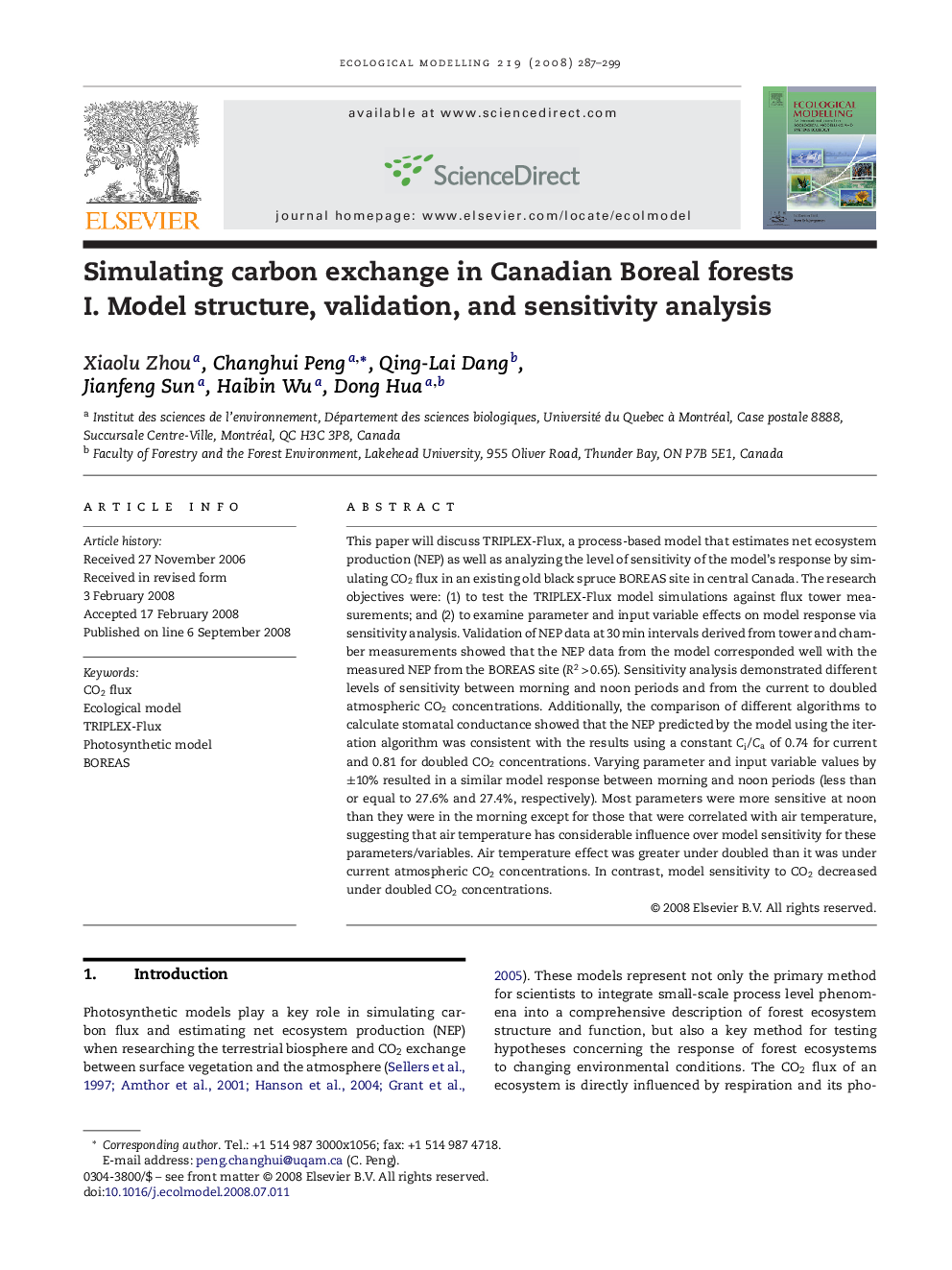| Article ID | Journal | Published Year | Pages | File Type |
|---|---|---|---|---|
| 4377923 | Ecological Modelling | 2008 | 13 Pages |
This paper will discuss TRIPLEX-Flux, a process-based model that estimates net ecosystem production (NEP) as well as analyzing the level of sensitivity of the model's response by simulating CO2 flux in an existing old black spruce BOREAS site in central Canada. The research objectives were: (1) to test the TRIPLEX-Flux model simulations against flux tower measurements; and (2) to examine parameter and input variable effects on model response via sensitivity analysis. Validation of NEP data at 30 min intervals derived from tower and chamber measurements showed that the NEP data from the model corresponded well with the measured NEP from the BOREAS site (R2 > 0.65). Sensitivity analysis demonstrated different levels of sensitivity between morning and noon periods and from the current to doubled atmospheric CO2 concentrations. Additionally, the comparison of different algorithms to calculate stomatal conductance showed that the NEP predicted by the model using the iteration algorithm was consistent with the results using a constant Ci/Ca of 0.74 for current and 0.81 for doubled CO2 concentrations. Varying parameter and input variable values by ±10% resulted in a similar model response between morning and noon periods (less than or equal to 27.6% and 27.4%, respectively). Most parameters were more sensitive at noon than they were in the morning except for those that were correlated with air temperature, suggesting that air temperature has considerable influence over model sensitivity for these parameters/variables. Air temperature effect was greater under doubled than it was under current atmospheric CO2 concentrations. In contrast, model sensitivity to CO2 decreased under doubled CO2 concentrations.
